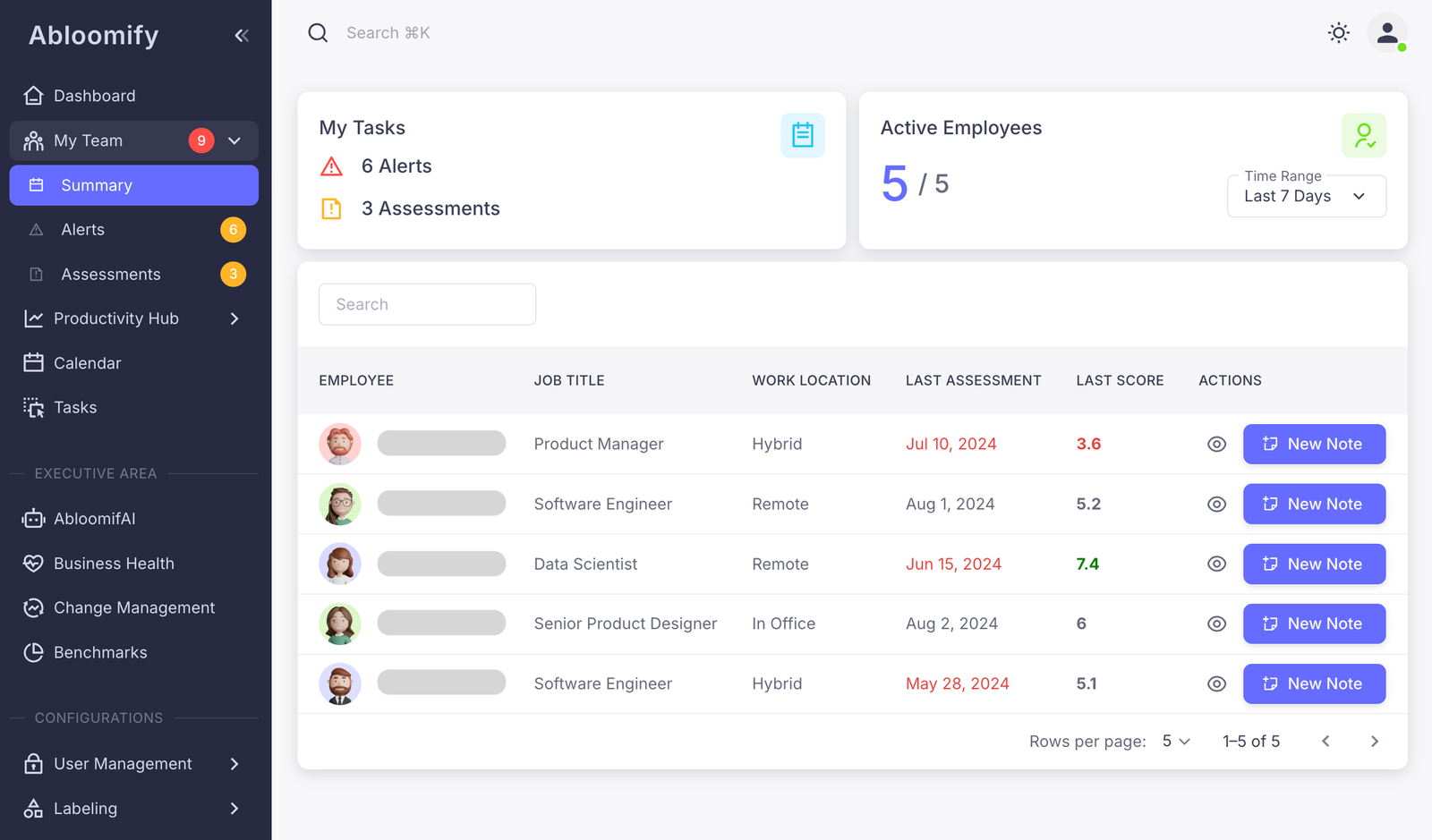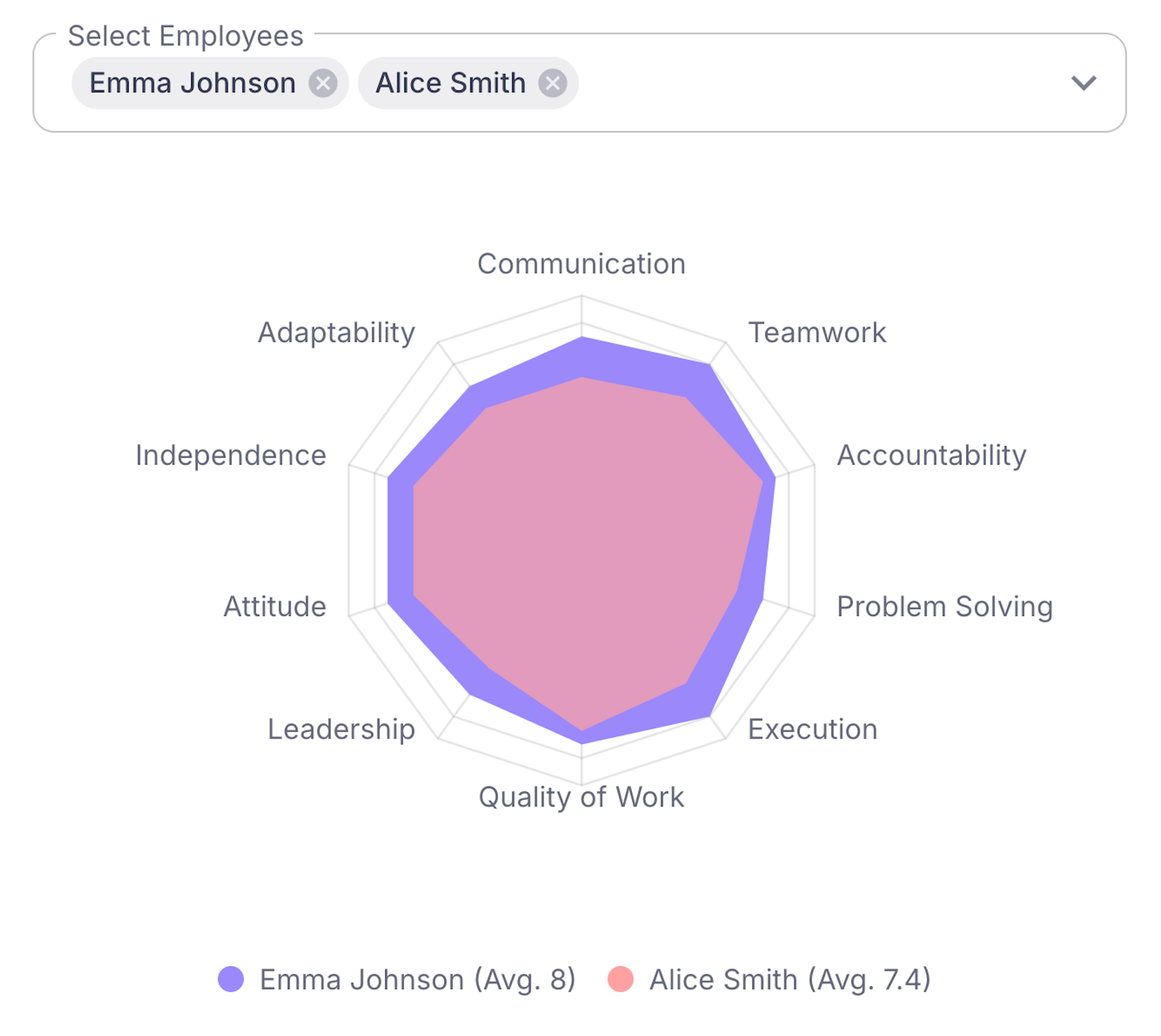Tech companies need robust workforce software to build efficient teams. This guide evaluates the key features and benefits of selecting the right solution, enabling smarter data-driven decisions for performance optimization.
Why Workforce Software Matters in Tech
The tech industry is synonymous with rapid change and relentless innovation. This landscape demands constant adaptation from its workforce. Workforce software plays a pivotal role in navigating these challenges, providing data-driven solutions that enhance team performance and drive technological advancement.
Tech companies face unique demands that require agility and resilience. To meet these needs, workforce software supports:
- Data-Driven Decision Making: Workforce software aggregates and analyzes vast amounts of data, offering insights that help managers make informed decisions to optimize team performance.
- Enhanced Productivity: By automating routine tasks, workforce software frees up time for employees to engage in higher-value work, thus boosting overall productivity.
- Improved Communication and Collaboration: These tools facilitate seamless communication, breaking down silos and enabling efficient collaboration across teams and geographies.
- Real-Time Feedback: Continuous feedback loops, crucial for innovation, are enabled by these platforms, ensuring agile development and swift course correction.
- Scalability: As tech companies grow, workforce software scales effortlessly, accommodating expanding teams and complex projects without missing a beat.
In an era where tech companies are striving for faster go-to-market strategies, workforce software provides the scaffold necessary for success. Leveraging workforce analytics for AI-driven productivity transformation enables firms to not only survive but thrive amidst disruption. Ultimately, these tools are not just about keeping up; they are imperative for staying ahead of the curve in a fiercely competitive ecosystem.
Key Features of Effective Workforce Software
In the tech landscape, effective workforce software has become a vital ally. Here are some key features that tech companies should look for:
- AI-Powered Performance Assessments: These leverage data to offer personalized feedback. They help pinpoint development opportunities and motivate employees by recognizing accomplishments. The result is heightened growth and productivity.
- Productivity Alerts: Real-time alerts ensure that productivity doesn’t drop unnoticed. Such alerts encourage proactive interventions to resolve potential issues. This leads to maintaining a consistently high level of output.
- Automated Team Management Tools: These tools streamline administrative tasks such as scheduling and resource allocation. Automation frees up managers to focus on strategic leadership rather than getting bogged down in routine processes.
These features ensure that teams stay highly engaged and productive. With AI-driven insights, leaders can make informed decisions that keep pace with a rapidly shifting industry. This tech-savvy approach guarantees not only an increase in efficiency but also facilitates a deeper understanding of what drives team performance.
Imagine harnessing the power of workforce analytics to enhance productivity. Data-driven insights are essential for understanding team dynamics. They allow leaders to adapt swiftly, fostering a culture of transparency and collaboration. By integrating these software features, tech companies not only enhance overall efficiency but also create environments where employees thrive. Such strategic investments in technology can lead to sustainable success in the tech industry.
Integrating AI into Workforce Management
AI integration into workforce management has revolutionized how tech leaders approach productivity and team dynamics. By leveraging AI, companies can analyze productivity trends with unparalleled precision. This analysis helps identify patterns in work habits to ensure peak performance.
Here’s how AI transforms workforce management:
- Automated Workload Management: AI algorithms consider each employee’s capacity, skills, and history to assign tasks. This not only optimizes workload distribution but also prevents burnout.
- Team Dynamics Optimization: AI evaluates team interactions and collaboration. It identifies strengths and areas of improvement, allowing leaders to proactively address conflicts and enhance synergy.
- Proactive Decision-Making: With real-time data analysis, AI empowers tech leaders to make informed decisions. Early identification of performance risks prevents larger issues down the line.
Despite its advantages, integrating AI requires thoughtful planning:
- Training: Organizations need to upskill employees to interact with AI systems. This builds trust and ensures smooth adoption.
- Data Privacy: AI systems require access to substantial amounts of data. Implementing strict data security measures is crucial.
- Custom Solutions: Tailor AI systems to specific company needs for maximum effectiveness.
AI’s role in workforce management fosters a data-driven culture. Leaders become adept at making decisions based on solid evidence rather than intuition. This capability is even more significant in tech environments where agility defines success. For more on optimizing workforce performance with AI, visit Harnessing AI to Optimize Workforce Performance.
Enhancing Performance with AI-Driven Insights
AI-driven insights are revolutionizing workforce management by offering tailored, data-backed guidance. By analyzing vast amounts of workforce data, AI helps leaders identify areas needing improvement. These insights can illuminate productivity bottlenecks, allowing HR leaders to implement targeted interventions or support.
Career path planning is another area where AI might excel. It helps identify skill gaps and suggests growth opportunities, aligning individual aspirations with organizational needs. This synergy fosters professional development while driving company goals forward.
Skill development also benefits significantly from AI insights. By understanding the skills prevalent in high performers, leaders can craft personalized development plans for their teams. These plans are not merely hypothetical but are grounded in data, ensuring relevance and impact.
Furthermore, a culture of continuous performance improvement is nurtured through AI-driven insights. When employees see data-driven evidence of their progress, it enhances motivation and engagement. A few specific outcomes this fosters include:
- Enhanced accountability when feedback is precise and measurable.
- Better alignment between roles and competencies, boosting morale.
- A positive feedback loop where success breeds further success.
In tech environments, where agility and innovation are critical, engagement and morale often hinge on transparent performance metrics. Data-backed initiatives not only build trust but encourage a proactive growth mindset. For more on this, explore this resource on increasing employee engagement. The integration of AI insights into workforce management becomes not just a tool but a catalyst for sustainable success.
Workforce Planning and Flexibility
Workforce software in the tech industry should offer robust capabilities for capacity planning, workload balancing, and supporting flexible work arrangements. The importance of these features intensifies within remote and hybrid team settings, where teams may not share the same physical space but need to maintain high efficiency and adaptability.
Capacity planning features allow managers to allocate resources effectively and predict future workload needs. Here are key capabilities to consider:
- Real-time Data Integration: Automatically updates capacity figures as projects progress.
- Predictive Analytics: Anticipates capacity issues before they become critical bottlenecks.
Workload balancing is equally vital, helping to ensure equitable task distribution. Consider these software capabilities:
- Automated Task Assignment: Uses algorithms to balance workloads based on skill set and availability.
- Visual Dashboards: Offers a clear view of task allocation and team output.
Flexible work arrangements have shifted from a perk to a necessity. Workforce software should include:
- Remote Collaboration Tools: Facilitate communication and coordination across diverse locations.
- Flexible Scheduling Options: Allow employees to adjust hours to accommodate personal needs.
In a continuously evolving sector, implementing flexible and scalable workforce solutions is crucial. For more details on choosing an appropriate work model, explore this guide on selecting a work model for tech companies.
Workforce software isn’t just about managing tasks. It’s essential for maintaining team morale and optimizing individual contributions, aligning with evolving industry demands.
Embracing Change: Technology and Process Optimization
The evolution of technology in the workplace is inevitable, prompting organizations to continually adapt and optimize processes. Workforce software plays a pivotal role in managing these organizational changes. It aids in seamless adoption and integration of new technologies, ensuring smooth transitions and minimal disruption to workflows.
To effectively harness workforce software, consider tools that measure the impact of change. These tools help identify the effectiveness of new processes, enabling fine-tuning and adjustment where necessary. Organizations benefit from:
- Real-time feedback collection, which highlights immediate areas for improvement.
- Performance analytics that illustrate changes in productivity.
- Integrated dashboards that offer a holistic view of workflow effectiveness post-change.
Licensing usage is another critical component. By evaluating the actual utilization of software licenses, companies can ensure cost efficiency. Tech firms, with their dynamic tools, can benefit from:
- Automated reports that highlight underused licenses.
- Options to reallocate licenses to departments more in need.
- Renewal alerts that prevent unnecessary spending on unused features.
These assessments prevent financial waste and encourage strategic spending, maintaining a competitive edge. Furthermore, a well-managed workforce transformation supports a thriving workplace culture, something extensively discussed in strategies for harnessing AI to optimize workforce performance. As technology and processes evolve, prioritizing thoughtful adaptations ensures ongoing success and innovation.
Privacy and Trust in Workforce Management
Privacy and trust are foundational in workforce software. They define how companies interact with employee data and how software solutions are received by the workforce. A privacy-first design shields employees’ personal information, which is increasingly crucial in building trust within tech firms. To achieve a balance between insights and privacy, software needs to provide aggregated insights, not detailed tracking of individual actions. This means reporting overall trends and patterns, safeguarding anonymity.
Here’s how privacy-first principles benefit tech industry leaders:
- Enhanced Data Protection: Ensuring robust encryption and access controls minimizes the risk of data breaches.
- Reduced Surveillance Concerns: By tracking aggregated data rather than individual metrics, companies alleviate fears of constant scrutiny.
- Improved Decision Making: Reliable data fosters a culture of transparency, aiding in strategic planning without compromising employee trust.
Respecting privacy nurtures a positive workplace culture, ensuring employees feel valued and secure. This approach is not just about compliance but about fostering an environment where employees willingly participate and contribute to the software’s objectives.
HR and tech leaders should recognize the importance of adopting these standards, as they set the stage for stronger collaboration and sustained growth. With privacy respected, companies can more effectively navigate office strategies and align workforce dynamics with broader organizational goals. As you consider workforce software options, remember that prioritizing privacy isn’t just ethical; it’s a strategic advantage.
Choosing the Right Platform for Your Tech Team
Choosing workforce software for a tech team involves more than just evaluating features. Crucially, integration capabilities can make or break the utility of a platform. Seamless integration with existing tools like Slack, GitHub, or Zoom can greatly enhance productivity. Consider not only the presence of integration but also the effectiveness and ease of these integrations.
Ease of use is another pivotal consideration. Even the most powerful software can fall short if it’s cumbersome to use. Prioritize platforms with intuitive user interfaces that encourage team engagement rather than deter it. User-friendly software reduces the learning curve and minimizes disruptions.
Future readiness is not just an industry buzzword; it’s a necessity. Technology trends evolve rapidly, so workforce software should be adaptive enough to integrate new features as demand changes. Select platforms that regularly update their systems to stay relevant.
Tailor the solution to meet specific industry needs. Tech teams have unique workflows, involving agile methods or continuous integration processes. Here, specialized software like Abloomify can provide noteworthy benefits. Abloomify offers customization to fit the distinct requirements of tech firms, thereby facilitating problem-free operations.
For more personalized insights, industry leaders should consider reaching out to experts. Companies like Abloomify provide tailored solutions that can be invaluable as your organization evolves. These well-considered choices will drive growth and maintain workplace harmony. For more on how AI is transforming workforce performance, explore harnessing AI to optimize workforce performance.
Final words
To excel in the tech industry, selecting the right workforce software is crucial. By leveraging AI-powered tools, leaders can create high-performing teams, drive sustainable growth, and maintain flexibility. Consider Abloomify’s offerings for a tailored solution to your workforce challenges. For a deeper understanding, reach out to Abloomify for expert guidance.



